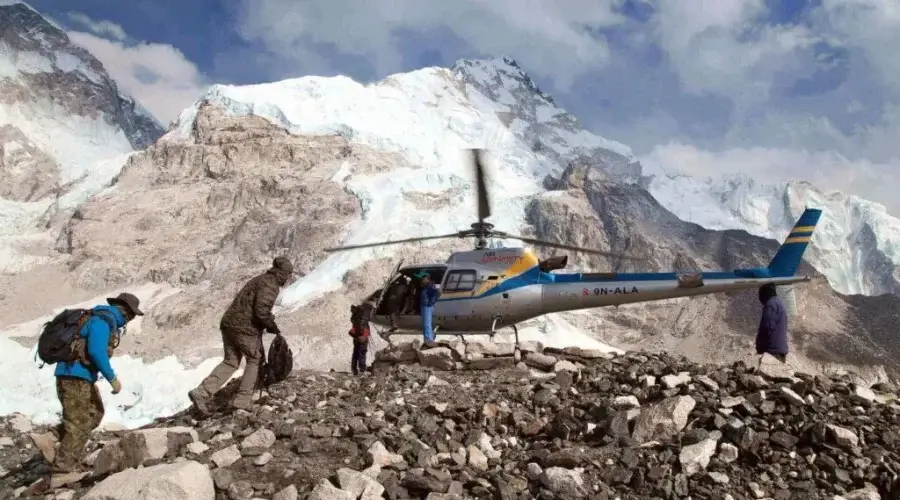
Everest Heli Trek
Everest Base Camp Heli Trek is an excellent option. Mainly for those who would love to see the beauty of the Himalayas but do not want to invest that much time. Everest Heli trek combines hiking and a helicopter ride. It helps travellers to see Mount Everest up close and quickly explore Sherpa culture.
The Heli Trek starts with the flight from Kathmandu to Lukla. Also known as Tenzing-Hillary Airport, which is 2,860 meters above sea level. The tourists can take a bus to Manthali and then fly briefly up to Lukla if direct flights are not available. From Lukla, the trekkers start their hike down to Phakding. A hike that takes about 3-4 hours and has an elevation of 2,610 meters.
Namche is an important acclimatization and cultural exploration stop. You can complete with museums to visit and optional hikes to vantage points such as Syangboche Airstrip for stunning panoramic views of towering peaks like Ama Dablam and Lhotse.
The Everest Heli Trek concludes with a helicopter flight back to the base after reaching the iconic base of Everest. The return flight by helicopter will be a thrilling way to see the Khumbu Valley and the mighty Everest region from an aerial perspective. Thus, the Everest Base Camp Heli Trek will be ideal for those who want adventure and awesome landscapes within a short time frame and thus is perfect for busy travellers.
With this Mt. Everest helicopter tour, you can experience the remoteness of Nepal. The thrill of trekking and the adventure of flying over Everest in less than a week. What else do you seek for?
Trek Facts
- Trek Beginning Point: Lukla (2,850 m / 9,350 ft.)
- Trek Ending Point: Everest Base Camp (5,364 m / 17,598 ft.)
- Trek Distance: Approximately 65 km / 40 miles
- Maximum Altitude: 5,550 m / 18208 ft.
- Trek Duration: 7 Days
- Permits: Sagarmatha National Park Entry Permit and Khumbu Rural Permit
- Mode of Transportation: Flight from Kathmandu to Lukla, Hike, Heli return
- Best Time to Visit: Spring (March to May) and Autumn (September to November)
Highlights Of The Everest Heli Trek
- Explore rich cultures in Kathmandu Valley.
- Amazing Mountain Flight over Mt. Everest, Everest Base Camp, and Khumbu Glacier.
- Kalapatthar and many other snowy mountains.
- Trek in the famous Everest region.
- Accommodations at the lavish hotels, lodges, and Teahouses.
- Explore Sherpa Capital, Namche Bazaar and its cultures.
- Lunch and overnight stay at the most elevated hotel in the world, Hotel Everest View.
Culture and Wildlife
The Everest Heli Trek is a culturally enriching experience in the culture of the Sherpas. On this trek, as one trek through the Khumbu valley, you get to see the traditional villages of the Sherpas, monasteries, and customs among the Sherpas.
The Sherpas are renowned for their warm reception and their rich traditions of coloured festivals and religious practices. Visits to local markets are done to learn about traditional dishes, and inquiries into their way of life can also be made.
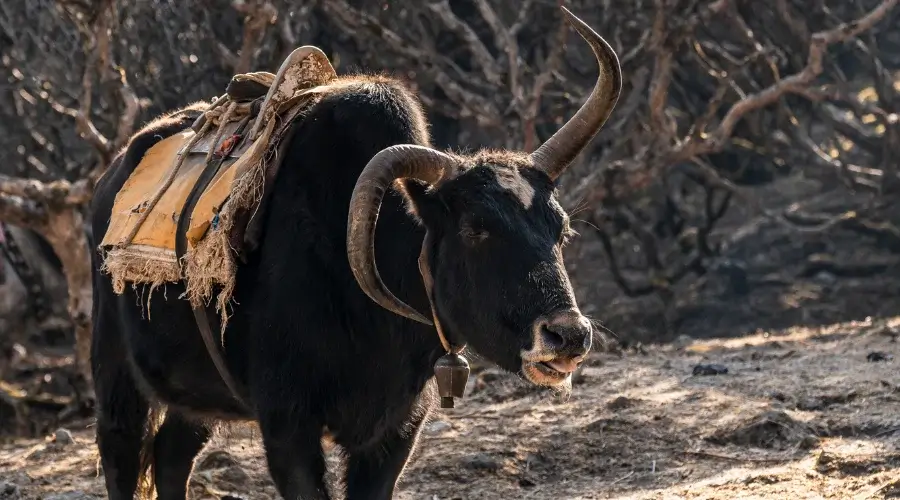
Be sure to watch for such animals as the Himalayan tahr, musk deer, and various bird species. The dense forest along the trek route makes a favourable habitat for these animals, besides adding beauty to nature.
A Typical Day on Everest Heli Trek
A typical day on the Everest Heli Trek involves an early morning start. After a hearty breakfast, trekkers head off on their day’s hike. The Everest Trails are well-marked and sometimes pass through breathtakingly beautiful landscapes filled with lush forests and picturesque villages.
According to the day’s itinerary, trekkers may walk upwards for a few hours until they reach their destination. Normally, lunch is taken en route at one of the teahouses or lunch spots. After having lunch and resting for a while.
Then, the trekkers move ahead and can catch beautiful views of towering peaks like Mt. Everest and Ama Dablam. Upon arrival at the day’s destination, one can rest, roam, or participate in cultural events by visiting the local monastery.
Notes to remember for the trek
- Generally, acclimatization days are just taken lightly and not considered a waste of time.
- The equipment for the tour is proper woollen clothes, strong trekking shoes, and a sleeping bag.
- Take plenty of water and keep well-hydrated throughout the trek.
- Take adequate Nepali Rupees cash for your expenses, as ATMs might not be available in remote areas.
- Respect the local culture by dressing decently whenever you visit villages or monasteries.
8 Days Everest Heli Trek Itinerary Outline
| Day | Itinerary | Time |
| 1 | Pickup from the Airport & Drop off at a Luxurious Hotel | 30 minutes (Drive) |
| 2 | Kathmandu Sightseeing | 2-3 hours (Drive) |
| 3 | Fly to Lukla and Trek to Phakding | 25 min flight & 4 hours trek |
| 4 | Trek from Phakding to Namche | 6-7 hours hike |
| 5 | Acclimatization Day at Namche (Hike to Syangboche and Hotel Everest View) | 2-3 hours hike |
| 6 | Acclimatization Day at Namche (Day hike to Thame) | 5 hours hike |
| 7 | Fly from Namche and land at Everest Base Camp (5364 m) & Kala Patthar (5550 m) and Fly back to Kathmandu with Lukla Landing | 1 hours Helicopter ride |
| 8 | Departure or Extending your Trip | – |
Detailed itinerary
Day 01: Arrival in Kathmandu (1400 m/4593 ft.)
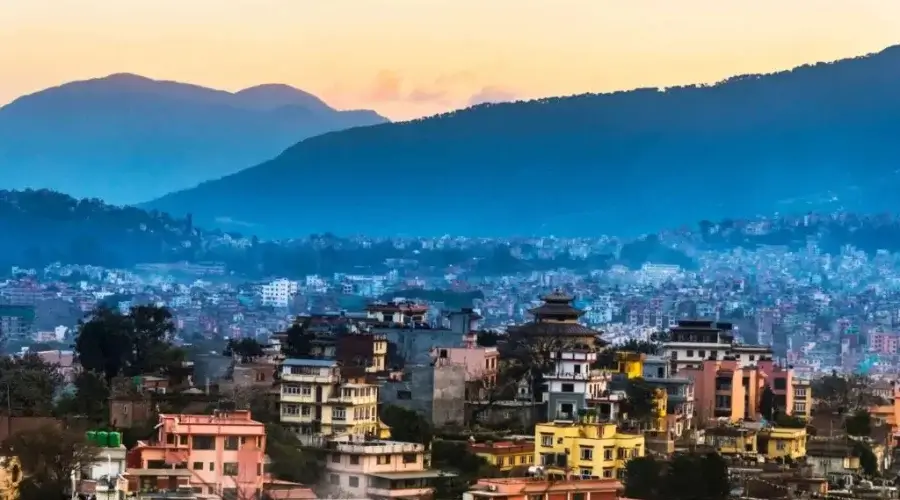
Upon landing at Tribhuvan International Airport (TIA), the representative of Himalayan Masters will receive you and take you to one of the luxurious hotels in a private car.
Probably in the late afternoon, there will be a pre-trip meeting at the hotel or in our office in order to finalize our trip plan.
There will also be an introduction with the guide. Many of your queries regarding the trip will be answered by the guide and other experts.
Remember to bring your passport, three copies of passport-size photos, and a copy of your travel insurance policy before attending the meeting.
Hotels in Kathmandu:
– There are enough hotels to stay in Kathmandu.
– You will find normal to standard five-star hotels in Kathmandu.
– You will get all kinds of extra services at no cost in the hotels.
Meal : Dinner
Accomodation : Hotel
Walking / Driving : 30 min driving
Day 02: Kathmandu Sightseeing
Kathmandu, a beautiful city, is the first step for any foreign traveller. Before you cherish the Himalayan experience, you can spend a day or more in Kathmandu to explore the cultural-historical and religious facts of Nepal.
Kathmandu Valley is home to 7 World Heritage sites that are filled with ancient architectural buildings, palaces, and monuments.
The Durbar Squares in Kathmandu, Bhaktapur, and Patan reveal a massive display of ancient and medieval arts. The largest stupa in the world, the Boudanath Stupa, Swyanbhunath, Pashupatinath, etc., are major attractions in the Kathmandu valley.
Himalayan Masters provides you with an experienced guide with lots of knowledge about the valley.
Related Package: Everest Three Passes Trek- 17 Days
Meal : Breakfast
Accomodation : Hotel
Walking / Driving : 2-3 hours driving
Day 03: Fly to Lukla (2840 m) and Trek to Phakding (2610 m)
Flight Route: Kathmandu → Lukla
Trek Route: Lukla → Chheplung → Chauri Kharka → Thado Koshi → Phakding
Beginning Point: Kathmandu (1400 m / 4593 ft.)
Ending Point: Phakding (2610 m / 8563 ft.)
Lukla to Phakding Distance: 5-7 km
Total Ascent: 1210 meters (3969 ft.)
Lunch: Thado Koshigaon
Overnight: Phakding
In the morning, a private car will pick you up from the hotel and take you to the airport. You’ll then board a flight that takes you to the gate of Everest. As the plane glides above the beautiful Kathmandu Valley, it heads toward Lukla Airport.
Upon landing in Lukla, you’ll meet the rest of the trekking crew and hand your bags to the porters. After a brief stop in Lukla, you’ll start trekking along the Dudh Koshi River.
The trail involves some uphill and downhill sections, but after a few hours of walking, you’ll arrive at Phakding, where you’ll have your first tea house experience.
About Lukla:
Lukla is a small village that marks the starting point for many treks, including the Everest Base Camp and Gokyo Lake treks. It is home to about 50-60 Sherpa households, most involved in the trekking field.
About Phakding:
Phakding is a small village located at a lower altitude than Lukla. The village has a population of about 150-200 people and offers basic services such as a health post, school, and monasteries.
Teahouses at Phakding:
– There are about 20-30 teahouses here.
– Wi-Fi, electricity for charging devices, hot showers, and warm, cozy beds are available.
Meal : Breakfast, Lunch and Dinner
Accomodation : Tea House
Walking / Driving : 25 min flight and 4 hours trek
Day 04: Trek from Phakding to Namche (3440 m)
Trek Route: Phakding → Toktok → Banker → Monjo → Jorshalle → Namche
Beginning Point: Phakding (2610 m / 8563 ft.)
Ending Point: Namche Bazaar (3440 m / 11319 ft.)
Phakding to Namche Distance: 12 km / 7.5 miles
Total Ascent: 830 m (2723 ft.)
Lunch: Jorsalle
Overnight: Namche Bazaar

After breakfast at Phakding, you will begin trekking along the Dudh Koshi River, passing through several small villages like Toktok and Benkar. The trail is scenic, with views of pine forests and river valleys.
Before entering Sagarmatha National Park, you’ll pass through Monjo, where permits are checked. The trek continues through the national park, following the river until Jorsalle, where you’ll stop for lunch.
After lunch, the trail becomes steeper as you cross the famous Hillary Suspension Bridge and visit Namche Bazaar, the largest Sherpa village in the Everest region.
About Namche Bazaar:
Namche Bazaar is a vibrant Sherpa town nestled in a crescent-shaped valley. It is the main trading hub of the Everest region, filled with lodges, cafes, and shops. There are more than 70 houses for the local people.
Teahouses at Namche:
– You will find normal to luxurious hotels in Namche.
– There are more than 50 teahouses and lodges.
– All the facilities, such as Wi-Fi, hot shower, charging, and other basic ones.
Meal : Breakfast, Lunch and Dinner
Accomodation : Guest House
Walking / Driving : 6-7 hours
Day 05: Acclimatization Day at Namche
This day is set aside for acclimatization, crucial for adjusting to the higher altitude. After breakfast, you’ll take a short hike to Syangboche and continue toward Hotel Everest View.
The hike provides majestic views of some of the world’s highest peaks, including Mount Everest, Lhotse, Nuptse, and Ama Dablam.
Hotel Everest View holds the record for being one of the highest hotels in the world. It is a fantastic Five Star Hotel, offering mesmerizing views of the tallest mountains.
It is the most elevated hotel in the world. You can also visit the museum and explore many Sherpa cultures and traditions.
After some time at the hotel, you’ll return to Namche for the night.
Meal : Breakfast, Lunch and Dinner
Accomodation : Guest House
Walking / Driving : 2-3 hours walking [Optional: if you hike to Hotel Everest View (3900 m)]
Day 06: Acclimatization Day at Namche
The small village of Thame is the right destination for the second acclimatization day at Namche Bazaar. This beautiful Sherpa village is also the ancient salt trading route between Tibet, Nepal, and India.
You’ll pass through the village of Thame and continue along the scenic route to Thame, a small village at the end of the Khumbu Valley.
About Thame:
Thame is a quiet Sherpa village at 3800 meters (12467 ft.). It is less visited than other villages, making it an ideal spot for those seeking a peaceful atmosphere.
Thame is also the childhood home of Tenzing Norgay Sherpa, one of the first men to climb Mount Everest. Then, we walk back to Namchee for the night’s stay.
After exploring Thame and enjoying lunch, you’ll return to Namche Bazaar overnight.
Meal : Breakfast, Lunch and Dinner
Accomodation : Guest House
Walking / Driving : 5 hours walking [Optional: if you hike to Thame (3800 m)]
Day 07: Fly from Namche and land at Everest Base Camp (5364 m) & Kala Patthar (5550 m) and Fly back to Kathmandu
Beginning Point: Namche Bazaar (3440 m / 11286 ft.)
Ending Point: Kathmandu (1400 m / 4593 ft.)
Total Flight Time: 2-3 hours
Breakfast: Namche
Lunch: Lukla
Overnight: Kathmandu
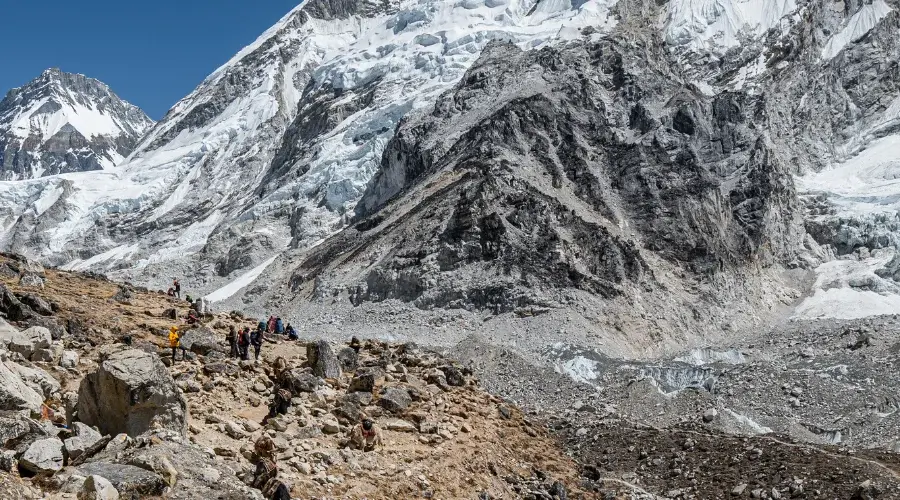
The seventh day of your trip is the most important. You will be picked up by a helicopter at Namche and fly over Khumbu Valley.
The helicopter lands at Everest Base Camp and Kala Patthar for a few minutes, allowing you to enjoy the great views.
Finally, you will be landed at Lukla airport, from where either the same or the other helicopter will take you to Kathmandu.
Depending on the arrival time at Kathmandu airport, spend a few hours strolling around Thamel Street, finding the last pieces of souvenirs for your friends and relatives.
Attend a farewell dinner party organized by Himalayan Masters in the evening.
Meal : Breakfast, Lunch and Dinner
Accomodation : Hotel
Walking / Driving : 2-3 hours flight
Day 08: Departure or Extending your Trip
After finishing this package trip, you can extend your Nepal stay further and ask Himalayan Masters to find other tour packages, such as Jungle Safari at Chitwan National Park, Rafting, Paragliding, and Pokhara Visit or any short trek around Kathmandu Valley.
Annapurna Base Camp trek or Poon hill trek can be great options if you still want to explore Nepal’s Himalayas.
Furthermore, if you have a visa and would like to extend your staycation in Nepal, you can do so. If not, you can manage all your things in the hotel and check out on time to catch the plane.
It is the best idea to reach the airport at least three hours prior to the scheduled flight time. The representative of Himalayan Masters will come to the airport to say goodbye.
Have an amazing and safe flight to your home! If you have any disaffection with our services, please write to us so that we can improve in the days to come. If you are satisfied, recommend our services to many of your friends and relatives.
Meal : Breakfast
Include / Exclude
Trip Cost Includes
- International and domestic airport pickup and drop-off are done by private vehicle.
- Three nights at a four-star hotel in kathmandu
- Helicopter flights (Kathmandu to Lukla and Namche to fly around Everest base camp and back to Kathmandu).
- Meals: Breakfast, Lunch, and Dinner (entire board during the trek).
- Basic teahouse accommodation during the trek with an attached bathroom and hot shower.
- Guides and porters (licensed trek leader and porter service).
- Trekking porter during the trek to carry your bags.
- Permits (Sagarmatha National Park entry permit and Khumbu Rural Permit).
- Medical kit (group medical kit box).
- All government taxes and company service charges
Complementary services from Himalayan Masters
- -25 degrees Celsius sleeping bag during the trip if needed.
- Down jacket during the trek, which can go -25 degrees Celsius.
- Use a pulse oximeter to check your spo2 and bpm at high elevations.
- Water bottle and purification tablets by Himalayan Masters
- first aid kit box.
- Seasonal fruits for dessert.
- The Himalayan Masters brand duffle bag for the trip
- Himalayan Masters Brand Trekking T-Shirt and Cap as a souvenir.
Trip Cost Excludes
- Travel insurance.
- International flights (to and from Nepal).
- Visa fees.
- Personal expenses (snacks, beverages, hot showers, internet).
- Extra meals in Kathmandu.
- Tips for guides and porters.
- Excess baggage charges.
- Unexpected costs due to unforeseen circumstances.
Useful Info
Best Time to do Everest Heli Trek
The best seasons for doing the Everest Heli Trek are the autumn, September, October, and November; the spring, March, April, and May.
Autumn Season
Autumn is considered one of the best periods of the year to go on an Everest Heli Trek, from September to November. Because of the clarity after the monsoon period, the Himalayas are visible in all their glory, and due to the mild temperatures, trekking feels nice and easy.
Spring Season
Spring also starts from March to May and is suitable for the trek. It has mild temperatures, lows at 10°C and highs at 20°C at lower elevations. The skies are clear, and rhododendrons bloom, adding beauty to the landscape. It is a favourite time for the weather and view. Thus, it’s a time worth exploring.
Winter Season
Winter conditions make conditions tough for the trek from December through February. It gets cold with temperatures dropping substantially at times, although it never usually gets really cold, and snowfall is often possible. But visibility is sometimes poor, and helicopter flights may be delayed.
Summer/Monsoon Season
Summer starts from June till August, which means that it is a monsoon season. Heavy rain makes the route very muddy, and visibility may also be poor. Helicopter flights are not regular since weather conditions are worse, making this period less favourable for taking this trek. The only advantage of this season is that the region looks very green and lush.
Everest Heli Trek Experience
This Everest Base Camp Heli Trek is special because it has adventurers who both trek and travel by helicopter.
On average, trekkers hike around 5 to 7 hours daily through rugged terrain, observing the rich Sherpa culture in their wake. This trek ends at the Everest Base Camp, a point from which the view of the highest peak in the world is superbly possible.
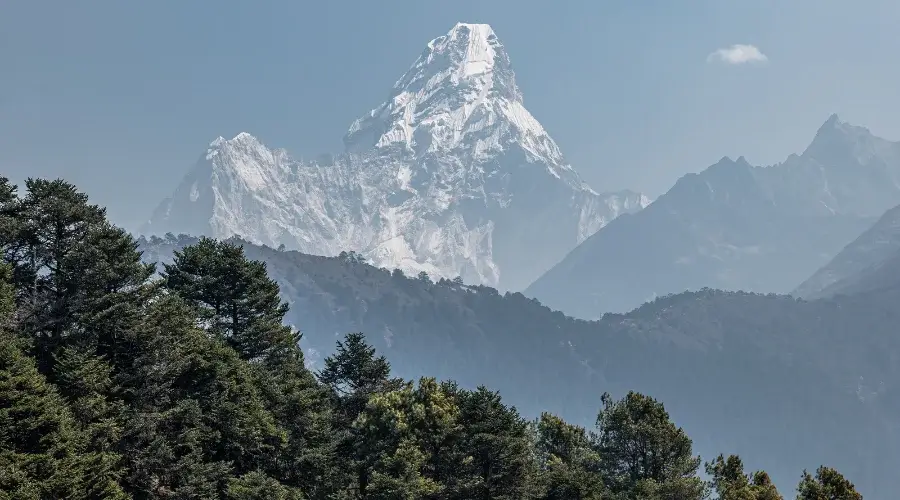
The helicopter ride while returning is extremely exciting as the majestic mountains are now seen right from above.
Weather Information
Autumn, from September to November, and springtime, from March to May, presents the Everest Region weather. During these periods, trekkers can expect fairly moderate temperatures and clear skies, providing the clearest view of surrounding peaks.

On the other hand, during winter, in December, January, and February, the trekking is very cold with heavy snowfall. Heavy rains in the summer/monsoon from June to August make the trails slippery and challenging.
EBC Heli Trek Difficulty
Everest Helicopter Trek Difficulty is categorized as moderately easy due to the heli return and daily hiking involved. Trekkers are supposed to be ready to hike about 5 to 7 hours daily.
Though prior experience in trekking is not needed, an excellent physical fitness level is required because you will be hiking for several hours daily.
It would help to acclimate adequately since you may experience high altitude sickness, and hydration is paramount for a successful trek.
Roads on the Trek & How to Avoid
The trek route comprises well-marked trails that lead through Sagarmatha National Park. However, some parts can be steep and rocky. In all such cases, trekkers should ensure their shoes are adequately fitted for the occasion and take more time to be on schedule without any problem.
Distance From Famous Places
- Distance From Kathmandu to Lukla: Approximately 138 kilometres via air.
- Distance From Namche Bazaar to Gorakshep: About 22 km.
- Distance From Gorakshep to Everest Base Camp: Approximately 3 km.
- Distance from Pokhara to Lukla: Around 275 km via air.
Trip Grade: Fitness Level, Medical, & Health
The Everest Base Camp Heli Trek requires a moderately fit level of fitness. The trekkers must be able to walk 5 to 7 hours each day on rough terrain, steep ascents, and descents.
Your cardiovascular endurance is essential; running, cycling, or swimming is recommended during training. Strength training, focusing on the legs and core, such as squats and lunges, will be beneficial in handling the demands of the trek.
Specific Training
A general workout program would involve a cardiovascular workout like running, cycling, swimming three to four times a week, weight training, and flexibility or yoga exercises.
Pre-training in high-altitude areas or with the help of altitude chambers prepares your body for low oxygen levels. This preparation helps not only physically but also mentally to meet the challenges that one may face during high-altitude trekking.
Altitude Sickness During the Trek
Altitude sickness is a key concern during the Everest Base Camp Heli Trek because of the rapid climb to higher altitudes. Symptoms include headache, nausea, and dizziness. As you trek around 4,000 meters and then fly over 5000 meters, you have a high chance of getting altitude sickness.
Emergencies can always happen with regard to trekking. Every trekker is always supposed to inform guides about health problems and follow the guide’s judgment in terms of pace and rest.
Travel Insurance
Choose Everest Base Camp Trek insurance policy, which covers all risks, including medical emergencies, altitude sickness, and trip cancellations. These usually include medical evacuation coverage, which is necessary in these remote areas.
Trekkers have to check if their policy is valid above 5,000 meters of altitude to be valid on the trek. Another important thing is that insurance protects lost or stolen luggage and even non-refundable expenses, too.
Everest Heli Trek Cost
The Everest Base Camp Heli Trek costs $3150 per person. It includes accommodation and meals en route, guide service, and a helicopter flight.
Other expenses will include your personal expenses, guides’, and porters’ tips, which are considered pretty substantial, as well as extra activities or excursions.
Additional Expenses
Besides the basic price for the trek package, trekkers must provide additional costs in their budget. Like travel insurance, guides, porter tips, and gear rental. In the case of trekking equipment, hire
ATM on the Trek Route
There are very limited ATMs on the Everest Base Camp Trek route. The most reliable access to cash is at Namche Bazaar, which has some ATMs. However, it is worth advising to withdraw sufficient cash at the beginning of the trek since not all ATMs in remote areas work every time.
Money Exchange
Money exchange services are available in Kathmandu, where travellers can change into Nepali Rupees. It is better to exchange an adequate amount in Kathmandu before you go on the trek because there are limited options available in remoter parts.
EBC Heli Permits
For trekking to EBC, you need two types of permits: one is the Sagarmatha National Park Entry Permit, and the other is the Khumbu Pasang Lhamu Rural Municipality Entry Permit. You can get these from Kathmandu at the office of the Nepal Tourism Board and also from Lukla and Monjo checkpoints.
Packing List
While preparing for the Everest Base Camp Heli Trek packing wisely means not forgetting important things. Here’s a suggested packing list:
Clothing
- Thermal base layers
- Trekking pants
- Warm hat and gloves
- Sun hat and sunglasses
Footwear
- Sturdy trekking boots
- Lightweight shoes or sandals for camp
Gear
- Sleeping bag (rated for cold temperatures)
- Trekking poles
- Daypack for daily essentials
Personal Items
- Toiletries (biodegradable soap, toothbrush, etc.)
- Sunscreen and lip balm
- First aid kit (including altitude sickness medication)
Electronics
- Camera or smartphone
- Power bank for charging devices
Documents
- Copies of permits and passport
- Travel insurance details
Things to Avoid/Not Packed/Store at Hotel/Office
You can store your luggage and other extra items in the Himalayan Masters office located at Thamel. It helps to reduce the extra costs of baggage charges at the hotel. We ensure your luggage and baggage safety.
Accommodation and Food
Teahouses in Everest
Teahouses are essential for the Everest Base Camp Trek and provide both accommodation and food stops along the route. The small lodges, usually operated by local Sherpa families, provide a cozy atmosphere to rest and be social with the locals.
Those teahouses in Everest vary in quality and amenities, depending on the altitude. You may get more comfortable lodges with an attached bathroom and hot shower facility in the lower regions, but such a facility may be lacking in high altitudes.
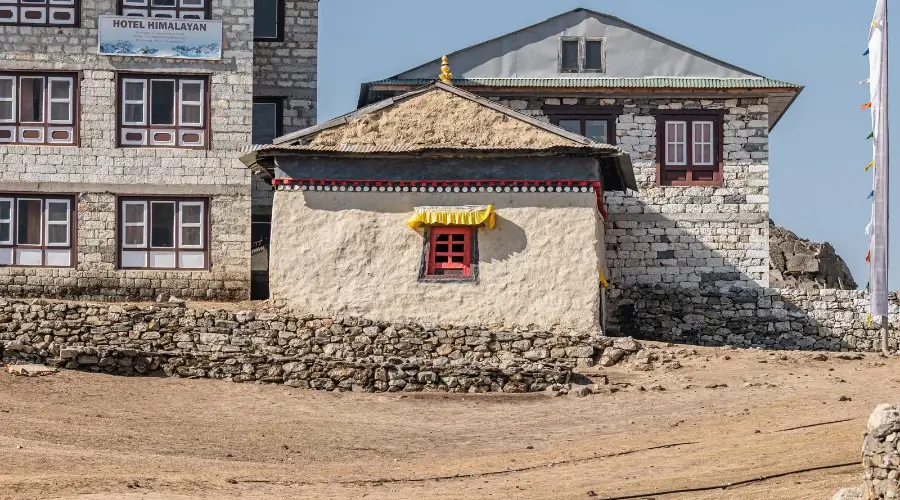
Most trekkers would like to stay in teahouses to travel lighter because meals are provided, and there is no need to carry tents or cooking equipment.
Most of the lodges have large dining rooms where trekkers can sit, rest, and share their views. The ambience is also further enhanced by wood-burning stoves that keep things warm on cold nights.
Food During Everest Heli Trek
Breakfast
The standard breakfast fare is boiled eggs, omelettes, toast, pancakes, or porridge. Some teahouses can also whip out Tibetan bread or muesli with yogurt. These are the kinds of meals that get you through the day.
Lunch
Whereas lunch is lighter but adequate and comprises noodle soup, rice items or sandwiches. During midday lunchtime, most trekkers are seen having hot dal bhat or vegetable fried rice.
Dinner
Dinner is the heaviest meal of the day. Trekkers can get dal bhat, pasta, vegetable curries, etc. Some teahouses offer meat items; however, it recommends avoiding meat beyond Namche Bazaar, as keeping meat fresh at higher altitudes is difficult due to the lack of refrigeration facilities.
Electricity & Battery Recharge
You will get reliable electricity at Lukla and Namche Bazaar, generally via hydroelectric sources. Similarly, many teahouses and lodges offer facilities to charge electronic devices.
This becomes less frequent higher up, for example, at Gorakshep. It is highly recommended that you bring a portable power bank on this trek to keep your devices running on the go.
Water on the Trek
Most teahouses have clean drinking water, either boiled or filtered, generally for a small fee. As there are certain waterborne illness possibilities, we ask that you not drink tap or stream water.
If you prefer, you can bring along some water purification tablets or a portable filtration system to obtain safe drinking water.
Communication
Sim card
You can easily get a pay-as-you-go SIM card from major operators like Ncell and Nepal Telecom upon your arrival in Nepal. A local SIM is highly inexpensive for data and calls, hence ideal for your trek.
Landline
In urban areas and a few teahouses along the trekking routes, landline services are available. Tourists can use public telephone booths or hotel lines to make local and international calls; however, international calls may be pricey.
Postal Services
The Nepal post office can arrange mailing and courier services to domestic and international destinations. But it is very unreliable for the trek routes.
Walkie-Talkies
Every trekking guide uses a walkie-talkie in case some remote places do not have a good mobile signal. This helps coordinate between groups for safety and convenience during the trek.
Wi-Fi/Internet
Many of the teahouses and lodges at higher points, including larger towns like Namche Bazaar, had access to Wi-Fi. It would be slow and not quite consistent because of bandwidth issues.
Some service providers have even started selling Wi-Fi cards targeted at trekkers, such as Everest Link, which offers Wi-Fi access at various routes, costing around $4-$5 for 24 hours of internet use.
Safety and Security
On any given Everest Base Camp trek, one should first consider safety and security paramount. Because of the unpredictable terrain and high altitude, trekkers must seriously choose whether to trek with a guide or on their own.
Guide Vs Solo Trekking
The guides know the terrain well, and problems with navigation are avoided. They also know much about the local culture and history, making the trek more enjoyable.
On the other hand, solo trekking allows for independence and flexibility when planning one’s route. However, new regulations have made it compulsory for every trekker to have a licensed guide accompanying them.
Hiring Porters Versus Without Porter
Trekking with the hiring of a porter will add much value to your trek as the load of heavy gear would be taken off your shoulders. They are trained to handle loads in a managed manner, as this would leave you free and give you more time to enjoy the trek rather than show concern about your backpack.
Trekking Without Porter
If you decide not to hire the services of a porter, you must be prepared to bear the brunt of physical activity as you have to carry everything you need. In this way, you will face the test of your stamina with full force.
It would be a good option for those wanting a more challenging experience, but travelling long distances may be exhausting.
How to Hire a Porter for the Trek?
- It would be best to search out the authentic trekking agencies offering professional services regarding porters.
- Clearly outline what you expect from your porter, including load limits and daily tasks.
- Agree on a wage that can be described as fair according to the local context.
- Ensure your porter has appropriate gear: strong shoes and sufficient warm clothes.
- Give respect to your porter and offer gratitude for all the hard work through the trek.
Tipping Culture for Guides and Porters
Tipping is a common culture in Nepal, especially for guides and porters who work hard to make your trekking experience pleasurable. As a general guide, tipping goes to about ten per cent of the total cost of your trek.
Alternative Trek Routes
Himalayan Masters have several alternative routes to Everest Base Camp for those who do not want to confine themselves to just one option. Some popular options include the Annapurna Circuit, the Manaslu Circuit, and Gokyo Lakes Trek routes.
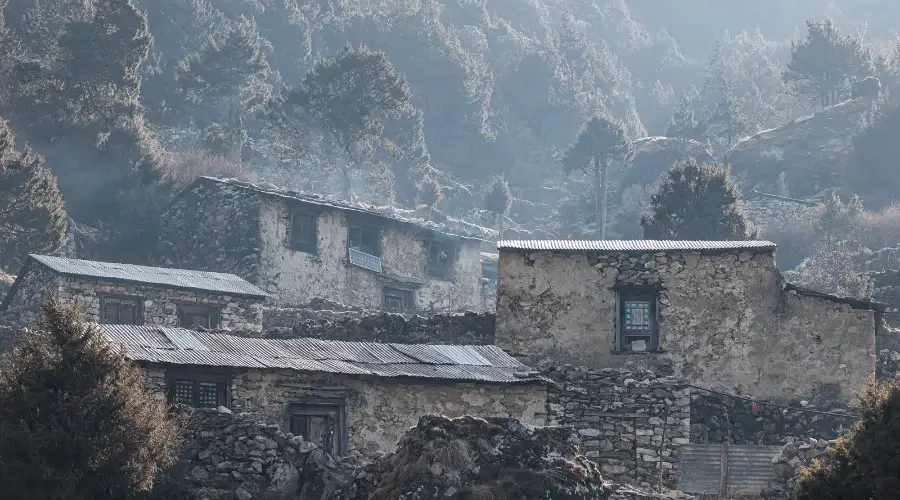
Extending Trip
You can always customize your itinerary to make an extension trip with Himalayan Masters. Additional trekking routes include Three Passes trek options or take in the sights and sounds of nearby cities like Pokhara and Chitwan.
How to Book with Himalayan Masters
It is relatively easy to book a tour in Himalayan Masters: log on to their website, complete the booking form, or even contact them directly by email or telephone.
Once the interest is given, detailed itineraries, costs, and other arrangements will be provided. Normally, a deposit has to be paid to confirm your booking.
How Can I Book a Trip at the Last Minute with Himalayan Masters?
It is always better to contact them directly through their website or at their office in Kathmandu at the last minute. They accept last-minute reservations.
However, they still recommend making the call at least a day before the journey so that the necessary number of guides and porters is readily available. Full payment is usually expected before the commencement of the trek.
Why Choose Himalayan Masters
Himalayan Masters is a reputed, government-registered trekking company. The treks safety, comfort, and customer satisfaction are of foremost importance to the guiding principles of Himalayan Masters.
Cancellation Policy
In the event of a trip cancellation, the amount you paid will not be refunded. However, you can use that amount to book a trek or trip with us anytime. If you’re unable to trek with us yourself, you also have the option to refer friends, family, or relatives to use the same amount for their trip.
Feedback/Review
We would love to hear your stories and experiences regarding your recent adventure of trekking with Himalayan Masters. Your opinion is super vital for us, and it will help us to improve in order to offer other people unforgettable holidays. Would you take one minute to leave us a review on our TripAdvisor page?
FAQs
Do I need previous trekking experience?
No previous trekking experience is needed to do the Everest Heli Trek. We designed the trek to be customizable for various fitness levels to make this trip viable for most travellers.
What time of the year is best to go the trek?
The pre-monsoon and post-monsoon seasons, from March to May and late September until December, respectively, are a perfect option with stable weather patterns and clear mountain visibility.
How much does the Everest Heli Trek cost?
The cost is per person and varies with the number in the group and what is included in the package. With Himalayan Masters, the cost is $3150 per person.
Can I join a group if I am a solo traveler?
Yes, you can join existing groups if you are travelling solo. Also, you can join a solo trek.
How long will the helicopter actually spend on Everest Base Camp?
Because of safety regulations and high demand during the high seasons, helicopters normally make landings at Everest Base Camp for about around 20-30 minutes.
What happens if the weather is bad?
Safety comes first in bad conditions and winds, and landing might be affected. Alternative arrangements will be made in such cases wherever possible.
Can one fly back from various points depending on the trek ?
Yes, trekkers can fly from different locations depending on preference and itinerary, such as Kalapatthar or Gorak Shep, among others.
What am I supposed to carry with me on the trek?
The essentials are warm clothing, strong trekking boots, a sleeping bag, medication, and snacks. And very highly recommended is that you take a camera for spectacular en-route views.
How long is the helicopter flight from Everest Base Camp to Kathmandu?
The flight by helicopter takes around 30-40 minutes from Everest Base Camp to Kathmandu.
Is travel insurance necessary to take on the trek?
Yes, it is greatly recommended. Such travel insurance would cover high-altitude trekking and rescue via emergency evacuation for your safety during this adventure.
Is it possible to customize the itinerary of the Everest Heli Trek?
Yes, we allow for customizable itineraries depending on an individual’s preference and time constraints. Yes, one may discuss personal needs with the chosen operator in advance.